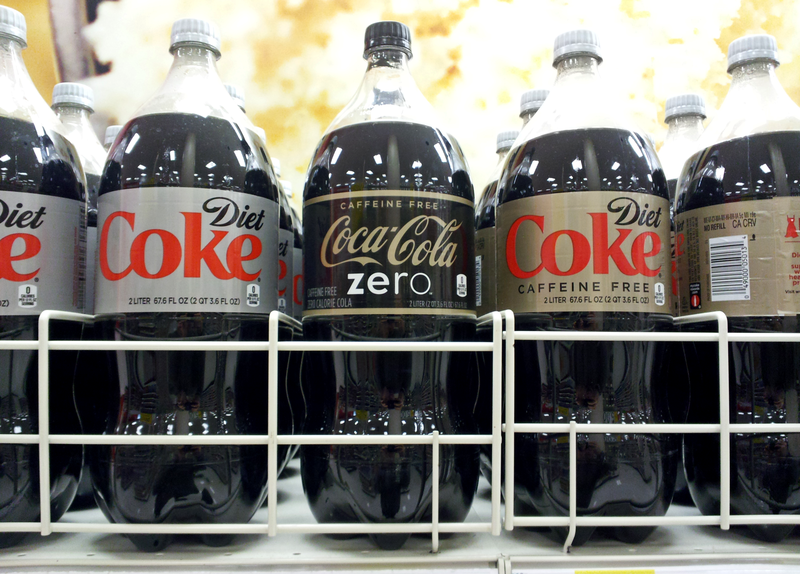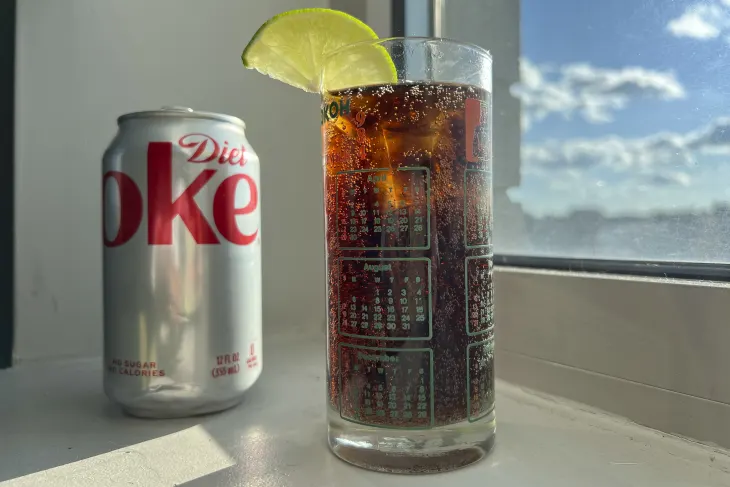
Coke Diet Caffeine – How Much Is Really In It?
April 11, 2025
Health Food Near Me – Find Delicious & Nutritious Options Close to Home!
April 15, 2025If you’re someone who enjoys a refreshing can of diet cola, you might be wondering:
“What’s really in it?”
Even though diet cola has no sugar and zero calories, it’s still made with several ingredients that give it its unique taste, fizz, and long shelf life.
In this article, I’ll break down the main ingredients in diet cola, explain their purpose, and help you understand what you’re really drinking. Let’s get started!
🔍 Common Diet Cola Ingredients (And What They Do)

Most brands of diet cola — including Diet Coke, Diet Pepsi, and store brands — include a similar list of ingredients. Here’s a breakdown of the most common ones:
1. Carbonated Water
- This is the main ingredient.
- It gives the soda its bubbly and fizzy texture.
- Made by infusing water with carbon dioxide (CO₂) gas.
2. Caramel Color
- This gives diet cola its classic dark brown color.
- It’s made by heating sugar to create color (but contains no sugar in the final drink).
- Approved for use in foods and beverages.
3. Aspartame or Sucralose
- These are artificial sweeteners used instead of sugar.
- Aspartame is common in Diet Coke; Sucralose is used in some sugar-free drinks like Diet Pepsi.
- Much sweeter than sugar — a little goes a long way.
- Zero calories and safe for most people (except those with phenylketonuria or PKU).
4. Phosphoric Acid
- Adds a sharp tangy flavor.
- Helps balance the sweetness of the sweeteners.
- It also acts as a preservative.
- Too much can affect tooth enamel over time, so it’s good to drink in moderation.
5. Caffeine (optional)
- Diet cola usually contains caffeine, which helps with alertness and energy.
- One can typically has 30–50 mg of caffeine.
- You can also find caffeine-free versions (gold label cans).
6. Natural Flavors
- A blend of flavoring agents that give diet cola its unique taste.
- These are usually proprietary, meaning each brand keeps their recipe secret.
- Comes from plant or spice extracts.
7. Citric Acid
- Adds extra tartness and tang.
- Helps with flavor balance.
- Also acts as a preservative.
8. Potassium Benzoate or Sodium Benzoate
- Preservatives used to prevent spoilage.
- Help stop the growth of bacteria or mold in the soda.
🧪 Diet Cola Ingredients List Example (From a Real Can)
Here’s an example ingredient list from a typical can of Diet Coke:
Ingredients: Carbonated water, caramel color, aspartame, phosphoric acid, potassium benzoate (to protect taste), natural flavors, citric acid, caffeine.
Each brand may vary slightly, but this gives you a general idea.
⚠️ Are Diet Cola Ingredients Safe?
Yes, for most healthy adults, diet cola ingredients are considered safe when consumed in moderation. All the ingredients are approved by food safety agencies like:
- FDA (U.S. Food & Drug Administration)
- EFSA (European Food Safety Authority)
- WHO (World Health Organization)
However, some things to watch out for:
- Artificial sweeteners (like aspartame) may cause bloating in some people.
- Phosphoric acid can affect dental health if consumed too much.
- Caffeine may cause sleep issues or jitters if overconsumed.
As long as you’re not drinking too many cans per day, diet cola can be part of a balanced lifestyle.
✅ Benefits of Diet Cola
- Zero sugar and zero calories – great for weight control
- No blood sugar spike – safe for people with diabetes
- Caffeine provides a mild energy boost
- Refreshing taste without the guilt of sugary sodas
❌ Things to Keep in Mind
- Some people are sensitive to artificial sweeteners.
- Drinking too much can lead to cravings or digestive issues.
- Always balance your diet cola intake with plenty of water and real food.
FAQ’s
1. What are the main ingredients in diet cola?
Diet cola usually contains carbonated water, caramel color, aspartame or sucralose (artificial sweeteners), phosphoric acid, caffeine, and natural flavors. These ingredients give it its fizz, color, and taste without the calories.
2. Is aspartame in diet cola safe to drink?
Yes, aspartame is approved by health authorities like the FDA and WHO. It’s considered safe for most people, but those with PKU (phenylketonuria) should avoid it.
3. Does diet cola have sugar?
No, diet cola does not contain sugar. It uses artificial sweeteners like aspartame or sucralose to give it a sweet taste without adding calories.
4. What gives diet cola its dark color?
The caramel color ingredient is what gives diet cola its deep brown appearance. It’s made by heating sugar or starch and is commonly used in many soft drinks.
5. Is caffeine added to diet cola?
Yes, most diet colas contain caffeine, usually around 30–50 mg per can. However, you can also find caffeine-free versions, which are clearly labeled on the packaging.
6. What is phosphoric acid, and why is it used?
Phosphoric acid adds a tangy, sharp flavor and helps preserve the drink. However, consuming too much may affect your teeth and bones over time.
7. Are the ingredients in diet cola natural or artificial?
Diet cola contains a mix of natural and artificial ingredients. For example, natural flavors may come from plants or spices, while sweeteners and colors are usually synthetic.
8. Can diet cola be part of a healthy diet?
In moderation, yes. Diet cola is low in calories and sugar-free, which can help with weight management. But it’s still best to drink it occasionally and balance it with water and nutritious food.
Final Thoughts
Diet cola ingredients may sound a bit scientific, but each one has a clear purpose — from giving the drink flavor and fizz to keeping it fresh for longer. While it’s not a health drink, diet cola is a better option than regular sugary soda if you’re watching calories or sugar. As long as you drink it in moderation, it can be a fun and fizzy part of your day.





